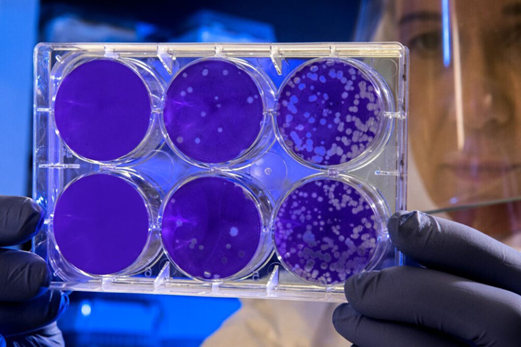By Tony McDougal. Published: 17-06

Researchers using genome sequencing have gained a better understanding of the impact of intensive poultry farming on global public health.
Scientists have used genome surveillance for Salmonella on Brazilian chicken to see how the development of chicken rearing in Brazil has changed the profile of the bacteria found circulating within the industry.
The health of people, animals and the environment
The joint Anglo-Brazilian study showed that while this currently poses no immediate health risk to importing countries, such as the UK, the bacteria were resistant to antimicrobial drugs. This highlights the importance of taking a ‘One Health’ approach that sees the connections between the health of people, animals and the environment, particularly when assessing global food supply chains.
Brazil currently produces almost 14 million tonnes of chicken meat each year and is the world’s largest exporter. Previous studies have shown the presence of Salmonella enterica on meat being imported into the UK and EU. These bacteria are one of the most common causes of diarrheal disease and can also carry genes that make them resistant to antibiotics used to treat human infection.
An investigation into Salmonella in Brazilian poultry
To investigate Salmonella in Brazilian poultry and the potential risks to food safety, researchers from the Quadram Institute at the University of East Anglia and the University of San Paulo carried out a genomic survey of Salmonella samples obtained from chickens in Brazil as part of routine monitoring for the bacteria over a 7-year span. They compared these with Salmonella genomes from poultry products exported from Brazil to the UK and other European countries as well as genomes from humans and domestic poultry in the UK, all put in context with hundreds of Salmonella genomes from across the world.
It found dozens of different types of Salmonella, with 2 particular types – Heidelberg and Minnesota – the most dominant. Salmonella Enteritidis, a predominant cause of food poisoning, accounted for just 2% of samples compared to 91% for the 2 dominant strains.
The types of Salmonella that were behind infections
Working with the UK Health Security Agency, the team looked at the types of Salmonella that were behind infections from samples going back 15 years. Around 1 in 200 were attributed to Heidelberg or Minnesota and some of these could be attributed to foreign travel. Importantly, by comparing the Brazilian Heidelberg and Minnesota genomes with others collected and deposited around the world, it was clear that the Brazilian Salmonella types formed a distinct sub-group separate from human cases. In addition, collaboration with the Animal and Plant Health Agency (APHA) showed that Brazilian-associated Salmonella was not found in UK chickens.
Professor Alison Mather, co-lead from the Quadram Institute, said: “Our findings show that Salmonella from imported Brazilian poultry products has not caused a major disease burden to UK consumers.”
It is believed the new types of Salmonella in Brazilian chicken derived from a common ancestor that emerged around 2006 and could have been linked to the introduction of a vaccine against Salmonella entertiditis 3 years earlier.
“constant monitoring…is extremely important”
Professor Andrea Mickie Moreno, from the University of Sao Paulo and co-lead, added: “The results show that the constant monitoring of key pathogens such as Salmonella involving animal and human populations is extremely important to comprehend the effect of prevention and control programmes implemented in a specific population.”
Similar changes in the predominant types of Salmonella have been seen before following human interventions, like vaccine development, that clear a niche that others can exploit. The researchers found that both Salmonella Heidelberg and Minnesota carried a combination of specific genes conferring resistance to different classes of antimicrobials: sulphonamides, tetracyclines and beat lactams. This likely gave these types of Salmonella a competitive advantage in the poultry production environment in Brazil, where antibiotic usage is high. More info at: https://www.poultryworld.net/health-nutrition/health/genomic-surveillance-put-salmonella-in-brazilian-poultry-in-the-spotlight/
